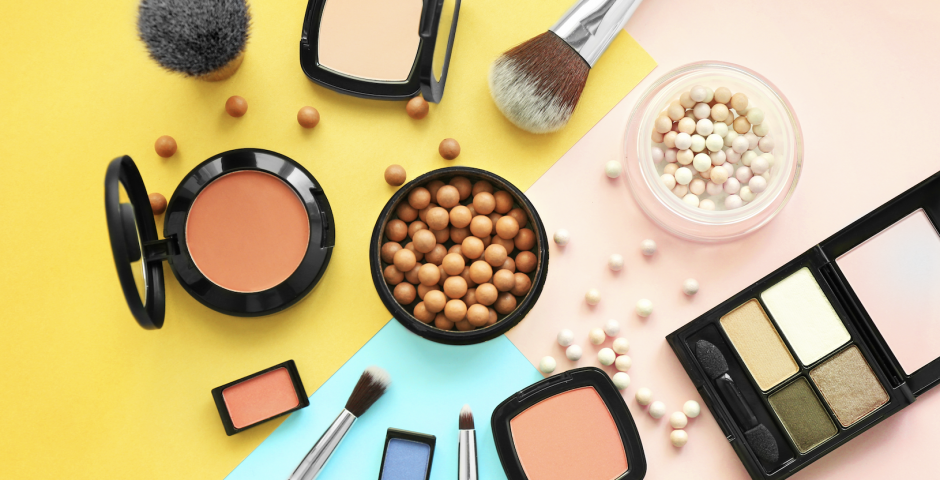The Green Deal: Europe’s chance to ban harmful cosmetics

How to ban harmful cosmetics from the European market?
Europe loves cosmetics. From deodorant to make-up, from sunscreen to day cream. Almost 500 million Europeans use cosmetics on a daily basis and it shows; with a turnover of 79.8 billion euros in 2019, the European cosmetics market is the largest in the world. Cosmetics are so widespread that consumers do not realise that they can carry a certain level of risk. In the 1970s, there were several incidents in which cosmetic products caused severe side effects, the most notorious of which took place in France in 1972.
French manufacturer ‘Bébe’ had accidentally added the irritating ingredient hexachlorophene to its baby powder. Even small amounts of hexachlorophene can cause negative side effects such as itching, irritation and discolouration of the skin. In this case, however, up to six percent of hexachlorophene was present in the baby powder. Hundreds of young children suffered serious health problems as a result and 36 babies eventually died from cardiac arrest caused by the powder. This prompted the European Community to create European legislation on cosmetics, and today the EU has the strictest cosmetics legislation in the world: EU Regulation EC 1223/2009, better known as the Cosmetics Directive.
The main scope of the Regulation is guaranteeing the safety of cosmetics, outlining an elaborate safety assessment and approval process before a new product can enter the EU market. On top of that, the Regulation states that a so-called ‘responsible person’ needs to be assigned to each product. This entity, because it can be a person or company, is liable for the product from the start of the approval process and stays liable since they even are responsible for monitoring the product after a product has been introduced.
Cosmetovigilance
The Bébe example shows how important the monitoring of cosmetic products is, especially since cosmetics often have complex compositions and consist of many different ingredients. This process has even been given its own name: cosmetovigilance. This term describes the process by which cosmetics are strictly controlled before and after their introduction to the European market in order to quickly detect any possible side effects. With this one might expect that all is good in Europe, however, I would not be writing this article if this were the case.
To determine whether a chemical ingredient can be used in the EU, it is tested according to the standards set by REACH. This regulation protects people and the environment against harmful substances and determines which ingredients may be used in cosmetics. REACH was, however, not specifically developed for cosmetics, but for chemicals in general. This means that an ingredient may be labelled as safe without enough consideration being given to the effect it has on the human body. Moreover, an ingredient does not have to be synthetic in nature to have adverse side effects once it comes into contact with the skin.
We can find a good example of this issue when we look at the widespread use of perfume in cosmetics. Research has shown that 99.1 percent of cosmetics consumers are exposed to fragranced products at least once a week. Under REACH, perfumes are safe because they are not a harmful substance. However, perfumes can be irritating when they come into contact with the skin. Perfume breaks down the skin’s protective layer and causes dryness, redness and swelling. In fact, perfume has been classified as the leading cause of contact allergy. So just because an ingredient is labelled as non-harmful does not mean it is good to use on the skin. Something that the current regulation has overlooked.
‘Harmful’ and ‘harmful for people’
Beyond that, it is not just benign substances with possible negative effects which can be found in cosmetics, even harmful ingredients can, under special circumstances, find their way into these products.
In theory, REACH should keep harmful substances out of consumer goods, but when it is not 100 percent clear whether a substance is harmful to people or not, it can still be approved for use in cosmetics. This is because ‘harmful’ and ‘harmful to people’ are interpreted as two different labels. The Scientific Commission on Consumer Safety is a specially appointed EU commission that checks whether a harmful substance is safe to use in cosmetics, and can grant permission to allow substances in low doses on the European market. This is what happened with Acetaldehyde.
Acetaldehyde is an ingredient that is often found in many fragrance and flavour compounds and is used in a wide variety of cosmetics. The substance is highly corrosive and has side effects ranging from eczema to cancer, depending on the duration of exposure. The Consumer Safety Commission has classified acetaldehyde as a category 3 mutagen. This means that, although there are concerns about the substance, it cannot be sufficiently demonstrated that it is actually harmful when used in cosmetics. Acetaldehyde can therefore be used in products, but only in small amounts. This raises questions on the extent to which the added value of these ingredients exceeds their risk.
The skin is a very sensitive organ and is able to absorb substances that are applied to it. For a long time, people believed that 60 percent of a cosmetic product would be absorbed by the body. Scientific research has shown that this percentage is actually somewhat lower, but harmful substances that enter the body in this way can still have considerable health effects. The current Cosmetics Directive has made regulation strict enough that European consumers do not have to worry about developing serious complications from cosmetics, but the use of REACH does raise the question of whether current substance assessment processes are sufficient the way that they are designed now.
How safe is ‘safe’?
European citizens are fortunately not confronted with life-threatening side effects from the use of cosmetics as in, for example, the USA*. But this does not mean that the use of cosmetics is without risks. It can lead to situations in which, for example, an anti-acne cream actually causes acne, or people develop allergies because of a shower gel they use. This goes directly against the intended purpose of cosmetics; nourishing and protecting the body. Moreover, many of these ingredients are not necessary. Perfumes make a product smell good, but do not have any functional role in a skincare product. So is it really desirable to add them when so many people develop issues because of them?
A third problem with REACH and the Cosmetics Directive is that the safety test for harmful substances is done on the basis of consumer use. This excludes a large group of people who come into contact with these substances at work. Their exposure level is often higher than what is considered safe by European legislation. Consider, for example, how much more often a hairdresser comes into contact with hair dye than a consumer who dyes their own hair every once in a while. Several scientific studies have shown that women who work as hairdressers have a significantly higher risk of infertility and miscarriages caused by the chemicals they are exposed to during working hours. This is despite the fact that these products have been labelled as safe by the EU.
At the moment the European Commission is restructuring REACH and this means that the requirements for cosmetic products in the EU are going to change. In light of the Green Deal, the focus is mainly on improved protection of people and the climate. This is promising, especially since harmful substances are completely banned from consumer products under the current proposal. This is the perfect time for the Commission to get on with it and take a better look at the effect of chemical (and non-chemical) substances in cosmetic products that have not been labelled ‘harmful to people’.
As I have argued, these substances can have adverse effects on people, lead to skin problems, and the development of allergies. European consumers would benefit from cosmetics having their own safety assessment framework that specifically focuses on the effect of substances on the skin. Dermatologists should play a greater role, as this is their field of expertise and they have been conspicuously absent from the current approval process. Overall, while the European market has the safest cosmetics in the world, we still have a long way to go before the cosmetics industry can actually deliver on the broad promise it has been making for decades: ‘this product is going to make your life better’.
For those interested in the issues surrounding hazardous substances in American cosmetics products, I strongly recommend the documentary ‘Toxic Beauty’ (2019) directed by Phyllis Ellis.
Linda den Bol has obtained a Bachelor’s degree in History from Radboud University and is currently pursuing her dual Master’s degree in European Governance at both Masaryk University and Utrecht University.
Featured image licensed with Shutterstock




